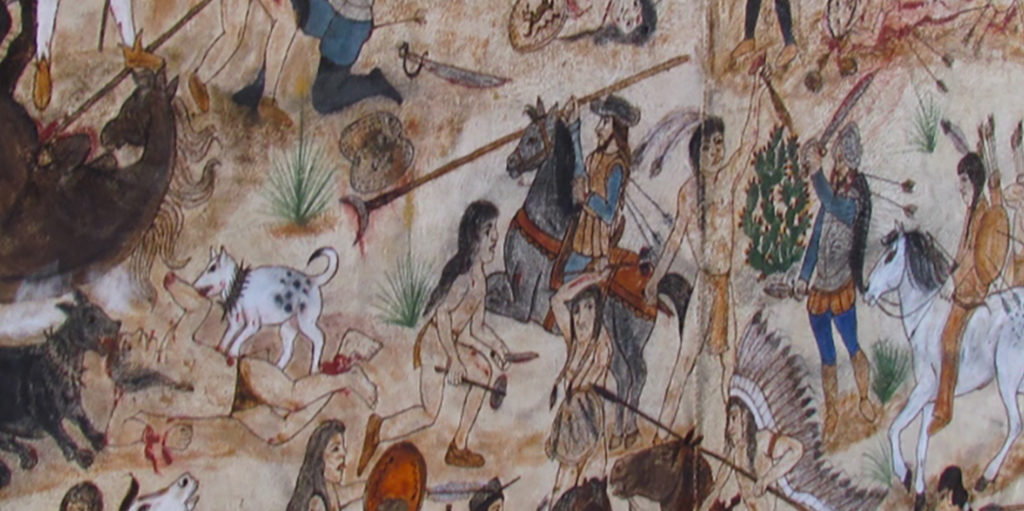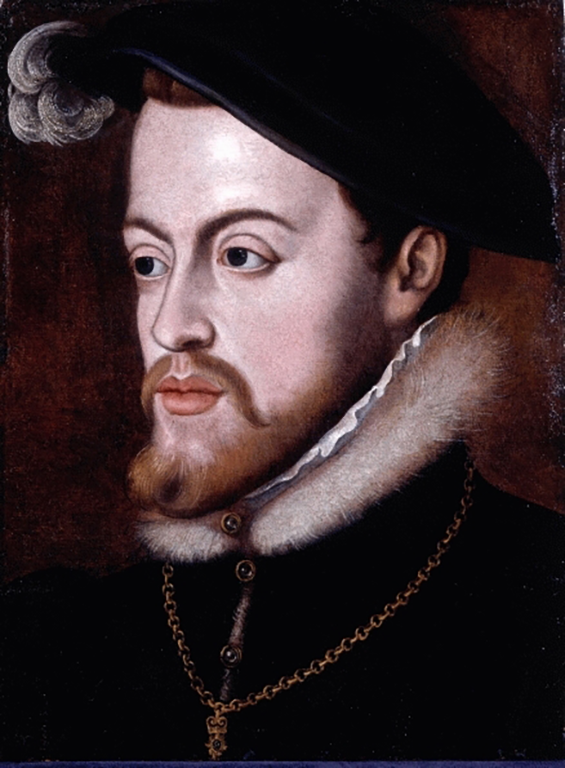The History of New Mexico
Collapse
Expand
-
Chapter 4: Spanish Colonization of New Mexico, 1598-1700
- Spanish Colonization of New Mexico, 1598-1700
- Toward New Mexico
- Oñate & Initial Spanish Colonization
- Oñate's Troubled Tenure
- Building a Royal Colony
- "The First American Revolution"
- References & Further Reading

By the mid-1550s, Spanish authorities and would-be encomenderos alike continued to dream of the prospect of wealth to the north, although the failures of Coronado had tempered their vision. In 1563 Francisco de Ibarra was tapped by King Felipe II to renew northward exploration from the mining center of Zacatecas. Ibarra’s appointment came in response to calls from Luis de Velasco, the second viceroy of New Spain, “to explore the lands Coronado had seen superficially, to locate suitable sites for towns, and above all, to look for mines.”1
Ibarra was cut from the traditional conquistador mold. He came from a family of means, although he did not stand to inherit the bulk of the family fortune. He was the son-in-law of the former viceroy, Antonio de Mendoza, who was a favorite in the Spanish court, and his uncle Diego had been among the principal beneficiaries of the Zacatecas mining boom. Family wealth allowed Francisco to undertake missions of exploration and discovery. Expeditions in the territories of the indigenous Chicomostoc and Chalchihuites contributed to his reputation as an experienced and able frontier leader.
Despite the shortcomings of his initial exploration effort, his second foray was more successful, albeit more life-threatening. In 1565 he led a group of sixty soldiers northward, each provisioned with five horses, along with a large number of indigenous allies and interpreters. Heeding the call to “explore the lands Coronado had seen superficially,” his group followed a path that led them to the lands of the indigenous peoples of present-day Sonora. They had not forgotten their earlier encounter with Coronado’s forces, however, and they immediately united in opposition to Ibarra’s presence in their homelands.
Such pressure pushed the terrified Spaniards along an eastward retreat that led them into the Sierra Madres and across the inhospitable Pulpit Pass. When they descended into the Carretas plains of present-day northwestern Chihuahua they were depleted of supplies and energy. Fortunately for Ibarra, the group was met by friendly Suma people who told them that golden cities lay to the north. Despite their continued hope that such riches might yet exist, Ibarra’s men did not have the wherewithal to investigate at that time. Instead, they pressed southward in hopes of quickly relocating Spanish civilization in order to resupply. Due to their incomplete knowledge of the region’s geography, they nearly perished in the Sierra Madres. But then, seemingly just in the knick-of-time, they located a Spanish slaving expedition and their ticket to rest and provisions.

Portrait of King Philip II of Spain, c.1531-88 (oil on paper, laid on panel), Sanchez Coello, Alonso (c.1531-88) (studio of) / Private Collection / Photo © Philip Mould Ltd, London / Bridgeman Images
As a result of this grueling ordeal, the Spanish Crown granted Ibarra the governorship of the newest province of New Spain: Nueva Vizcaya. An amorphous territory with its capital city at Guadiana (present-day Durango City), the new province was defined only as the “lands north of Zacatecas.” Despite his jurisdiction’s lack of demarcated borders, Ibarra proved to be an adept governor. In that capacity he furthered Spanish exploration and encouraged the foundation of missions and haciendas. During his tenure, ranching and mining came to prominence as the main economic thrust of the region—a pattern that continues to this day. Ibarra’s efforts colonized the next swath of northern territory, however tenuously, and reaffirmed patterns of Spanish expansion that later influenced the exploration and settlement of New Mexico.